
The Cryogenic Society of America and Cold Facts celebrates distinguished women who embody the expertise and drive that is putting cryogenics and superconductivity at the forefront of energy, aerospace, quantum, and myriad other fields of industry. Congratulations!
- Cynthia Annema
- Maria Barba
- Ashley Blasiole
- Dr. Melissa Gooch
- Ioana Craiciu
- Tisha Dixit
- Roza Doubnik
- Patricia Jovičević-Klug
- Hanna Krueger
- Sukanya Sagarika Meher
- Cassie Kirkconnell Smith
- Dr. Wenjuan Song
- Eve M. Vavagiakis
- Izzy Yeomans
- Zhuo Zhang
Cynthia Annema
Researcher, University of Twente
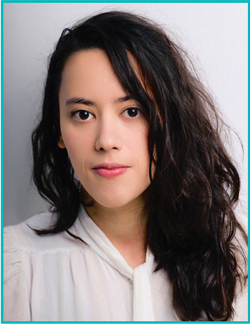
What projects are you working on now?
I am developing an affordable small-scale hydrogen liquefier. Currently, the main focus is on the conversion of orthohydrogen into parahydrogen using hydrous ferric oxide catalysts.
What accomplishments are you most proud of?
I started working in January 2023, after I finished my master’s assignment in the same research as I am working on right now. Therefore, I haven’t made any great accomplishments yet, but I feel this creates a space for accomplishments to come.
What advancements in cryogenics are you hoping to make in the future?
I hope to achieve a great innovating breakthrough in our research in the liquefaction of hydrogen with our research team. However, it is hard to say because I have been working on it for a short amount of time. I believe personal, professional and intellectual growth is gained during every project I’m working on now and projects I hope to work on in the future. Another goal I would like to achieve is to bring more recognition to cryogenics and all other STEM fields, and to show that with a bit of creativity and a fresh view on projects, the greatest achievements can be made.
What advancements for women would you like to see in the industry, and what is the best approach to attracting more women into the field?
Representation from highly motivated women that can show their motivation and hard work to other girls and women is key, but also promotion for the cryogenics and superconductivity fields, in general, is an important component to drawing more women into the field. To be honest, I didn’t know a lot about our industry, and I found a course about it accidentally. However, it was the best mistake I made during my studies. Luckily in our research group, the number of highly motivated women increases every year. Even if some are just students, like I was a year ago when I did my master’s assignment in this research group, female representation and just pure “girl power” from an associate professor motivated me, and possibly such choices will motivate other women to continue to work in and join the field of cryogenics and superconductivity.
Maria Barba
Ph.D. in Cryogenics, cryogenic engineer, Fermi National Accelerator Laboratory (Fermilab)
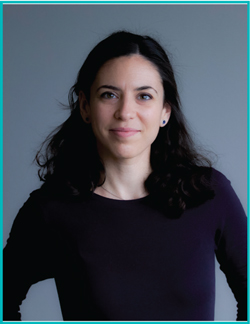
What projects are you working on now?
The field in which I work is performing cryogenic operations and engineering support in two large cryogenic facilities. One facility is used to test cryomodules for particle accelerators such as SLAC and PIP-II. The other facility supports several testing systems going from superconducting magnets for the HiLumi project at CERN to superconducting cavities for several applications including accelerators, fundamental materials research and quantum technologies.
What accomplishments are you most proud of?
Either at the end of my Ph.D. or the end of my Post-Doc, after a few years working on each experimental test stand, it was a pleasure to realize all the work done when summarizing everything in a final writing or transferring your knowledge to the next student. When you realize that you know every single inch of your experimental facility, every type of sensor, and when you recognize every single noise of your entire system, and you know every weak point, mastering the whole system is fascinating. The main challenge is always related to the equipment and the applications: dealing with expensive and complex equipment (and, moreover, cryogenic fluids!) while trying to push different technologies to their limits.
What advancements in cryogenics are you hoping to make in the future?
My Ph.D. and postdoctoral experiences were both in cryogenics, the first one focused on cryocoolers to cool HTS and the other focused on liquid argon detectors. Now I am working on large-scale helium refrigeration systems, a completely different topic but still in cryogenics, which shows the large variety of the field of low temperatures. With this new position, I hope in the coming years to have solid experience in large scale cryogenic systems. New scale, bigger systems, new challenges!
What advancements for women would you like to see in the industry, and what is the best approach to attracting more women into the field?
Creating a large and accessible community of women in cryogenics and superconductivity, communicating and discussing frequently and exchanging different ideas, will probably help in finding new ways of communicating to the general public about our jobs and the transfer of our passion to the next generations of girls. Motivating and stimulating little girls since the very early stages, not only in cryogenics and superconductivity, but in any engineering field is key. How can you get curious about how a plane flies if you never played with a miniature one when you were a child?
Ashley Blasiole
Operations Engineer, Commonwealth Fusion Systems (CFS)
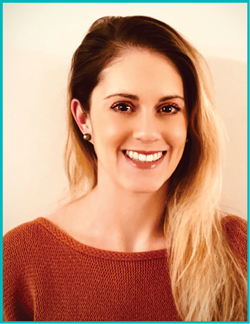
What projects are you working on now?
My current projects are building up, developing and implementing operational processes for SPARC, projects that specifically include the superconductive magnets and cryo-distribution systems.
What accomplishments are you most proud of?
My professional accomplishments include developing the CONOPs and outlining the operational modes for superconductive magnets and cryo-distribution systems for CFS; sitting as a launch conductor for two successful launches, most notably: Straight Up Launch, where I acted as the responsible engineer for the power, RP1 and service (helium, nitrogen, liquid nitrogen, compressed air and water) subsystems of ground support equipment; and developing the novel methodology for testing benzo[b]furan in smoke tobacco products.
What advancements in cryogenics are you hoping to make in the future?
For future cryogenics, I hope to run and optimize the cryo system for our tokamak successfully where we reach our objective of Q >1. I would like to make the cryogenic system more robust, reduce complexity and create optimized operational functionalities for all future tokamaks. One of the most important factors for superconductive magnets inside a tokamak is maintaining cryogenic temperatures across the system. Achieving temperature gradients can be operationally challenging for large systems, being able to pull concepts and knowledge from my past experiences and streamline SPARC for future tokamaks.
What advancements for women would you like to see in the industry, and what is the best approach to attracting more women into the field?
I would like to see more women publicly recognized for their achievements in the fields of cryogenics and superconductivity. I want to be a part of an all-women controls and operational team, recognizing the women who design, test and build controls systems, fluid systems and superconductive magnets. I want to see more women recognized for being successful at work and at home. Advancements start with changing the narrative on who can be an engineer, scientist or technician and by diversifying and supporting the talent already in the field.
One of the most challenging concepts as an adult woman in STEM has been redefining the bias centered around women in STEM. I have been fortunate enough to have female influences in my family who have helped pave the way for my achievements, including my grandmother who started as a draftswoman during a time when this wasn’t favorable. Throughout my career, I have encountered challenges without having supportive mentors, hands-on experience, encouragement and resources. To redefine the bias for women in a control room, in a laboratory or any field where representation is lacking, requires outreach. Outreach can be programs for underprivileged areas, science and engineering camps, social media, podcasts, or any outward facing platform that focuses on all-encompassing groups in STEM. Creating a new narrative should start at home, but society should focus on redefining what the future will look like, and that is the responsibility we all have.
Dr. Melissa Gooch
Research Associate 2, The Texas Center for Superconductivity at the University of Houston
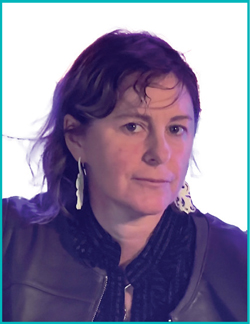
What projects are you working on now?
These are constantly evolving but consistently there is always the characterization of new superconductors and novel magnetic materials as well as the in-depth characterization of existing materials through thermodynamic, resistivity, magnetic and pressure-dependent measurements.
What accomplishments are you most proud of?
Graduating on time, followed closely by appearing on NOVA in David Pogue’s series: “Making it Colder” were accomplishments I am grateful for every day. Graduating on time was a challenge for two reasons, with the biggest hurdle occurring in my personal life as my husband suddenly passed away two years into my graduate program, and the second, finding a research project that would lead to a successful dissertation. Both challenges not only added to the hardships of going to graduate school, but in many ways, gave me a unique set of skills that have allowed me to successfully tackle a variety of difficult problems not only in my personal life but also in the lab as my career has advanced.
With that said, I wish I could say that all my mentors and colleagues helped advance me throughout my career. Many did not. I understand that opportunities for women have greatly improved, but sadly, I know many have encountered problems and barriers that ultimately resulted in having them leave research and sometimes science altogether. I fought so hard to get my degree that it is important to me, personally, to stay active in science. I feel it is my duty to help others see they can also be a scientist and even get their Ph.D.
What advancements in cryogenics are you hoping to make in the future?
I am excited to be part of the future with all the new cryo-free systems that are coming onto the market. The problems of obtaining adequate quantities of liquid helium for our low temperature measurements of superconductors and novel magnetic systems have been challenging.
What advancements for women would you like to see in the industry, and what is the best approach to attracting more women into the field?
Hiring equality that is based on experience rather than gender is important. I have personally experienced this throughout my career, and I know my fellow colleagues have as well. It would be an amazing start if we were all given the same opportunities as our male counterparts. More of us in positions across the board is number one. I feel in my industry there are so few women that it makes it very difficult to convince new students to even try to start an advanced degree, let alone make a career out of it.
I started my career as a professional ballerina. My mother wanted us to have art in our lives. Growing up with a father who was a research chemist and a classical organist, I was always encouraged by his example. When injuries necessitated that I pursue another path, I obtained an associate’s degree in music production from Houston Community College. The chemistry professor at HCC suggested that I transfer to the University of Houston, and I actually enrolled as a computer science major. I quickly determined that was not my cup of tea and enrolled in physics. Two professors influenced my decision to obtain my undergraduate degree in physics, and another student in Dr. Paul Chu's group and I became friends. Stephen Tsui, now a professor at Cal State San Marcos, convinced me to join Dr. Chu's group. I received my Ph.D. in 2010…and on schedule!
Ioana Craiciu
Postdoctoral Scholar, NASA JPL
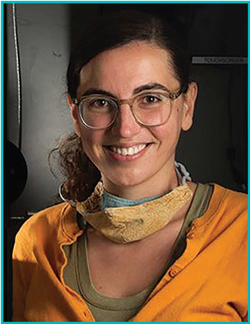
What projects are you working on now?
I work on optimizing superconducting nanowire single photon detectors (SNSPDs) for quantum communication and quantum information. We are currently working towards building a ground-based receiver for quantum communication. This is a cryostat which uses a pulse tube and sorption cooler to reach a base temperature of 1 Kelvin, in which we will install multiple Performance-Enhanced Array for Counting Optical Quanta (PEACOQ) detectors and cryogenic readout electronics (featured in this issue of Cold Facts). We are also working on improving the PEACOQ detector design. We would like to increase its efficiency, characterize and improve the photon number resolution of the detector and decrease the system timing jitter. These improvements will boost data rates and reliability in quantum communication demonstrations.
What accomplishments are you most proud of?
I am only one of eleven authors on our recent manuscript describing the PEACOQ detector, and while I am definitely proud of my contribution to that work, I am also very proud of all of my colleagues who contributed. There’s a lot of talent among them. Another source of pride has been mentoring younger scientists and seeing them take off in unexpected and exciting directions. I’m also proud that I got my Ph.D., and I’m pretty proud that I unofficially ran a marathon during the pandemic.
What advancements in cryogenics are you hoping to make in the future?
Such a big question! For the near future, I’m excited to work on superconducting nanowire single photon detectors, and seeing what new applications we can enable by improving their performance across several dimensions, like efficiency, count rate, timing resolution and photon number resolution. This technology is only about 20 years old, and already so much has been demonstrated. SNSPDs are now commercially available, and they have made their way into research labs around the world. However, there is still not one SNSPD detector that can do it all. There are tradeoffs between active area and timing resolution, between sensitivity and maximum count rate, and there are areas where SNSPDs still need development, like readout for large arrays. There is still a lot of work to be done.
What advancements for women would you like to see in the fields of cryogenics and superconductivity?
One of the things I love most about my job is the people with whom I work every day. They have some important things in common, such as inquisitive minds and a willingness to work hard, but mostly they are very different from one another and contribute to our work in unique ways. I hope that people of all kinds, including women, can choose a career as a scientist or engineer in cryogenic technologies because it’s the opportunity to solve problems with a diversity of minds, personalities and perspectives that makes the job wonderful.
What would be the best approach to getting more women into your field?
The barriers women have to overcome to be part of a field like cryogenic technologies have become smaller over the years, and I have hope they will become smaller yet. The next generation of scientists, boys and girls, have grown up with many female role models in STEM roles, and I think that will make a big difference. One area that still needs a lot of work here in the US is support for families. Women are disproportionately affected by this because they are often the primary caregiver for children. This can lead women to choose careers based not on their ability or affinity for the work, but based on the work schedule. For example, in many states, new parents have only three months of leave, and yet the CDC recommendation is that infants breastfeed exclusively for six months. For jobs that require you to physically be in a lab, that equation just doesn’t add up.
Tisha Dixit
Research Engineer (Physical Measurement and Cryogenics), Ph.D., French Alternative Energies and Atomic Energy Commission (CEA), Paris-Saclay Centre, France
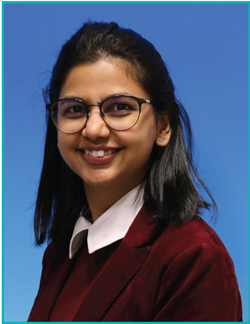
What projects are you working on now?
I am currently engrossed in the investigative studies of cryogenic pulsating heat pipes (PHPs). Experimental investigation of cryogenic PHPs is presently conducted by only a handful of research groups around the world. At the Laboratory of Cryogenic Test Stations (LCSE) of the Department of Accelerators, Cryogenics and Magnetism (DACM) within the Institute of Fundamental Research of the Universe (IRFU) at CEA Paris-Saclay, we have developed a multi-objective experimental test rig for this purpose. We have the ability to experimentally characterize cryogenic PHPs of varying physical dimensions such as length ranging from several centimeters to a few meters, different capillary diameters and various cryofluids. Our recent design includes development of a nearly half-meter-long, 18 W class neon PHP.
What accomplishments are you most proud of?
Thanks to the opportunities I have received along my career path, I am proud to be a hands-on experimentalist. Slightly more than a decade ago, after completing my bachelor’s in mechanical engineering, I joined the field of cryogenics by happenstance. This unique domain captivated my interest such that not only my master’s, but I even pursued my doctoral research in cryogenic engineering from the Cryogenic Engineering Centre, IIT Kharagpur, India. My doctoral supervisor, Dr Indranil Ghosh, molded me with theoretical, computational and mainly experimental abilities. I observed myself to be most absorbed while materializing a concept into apparatus. After joining CEA, I have gained the real skill sets to call myself a cryogenic experimentalist. The credit goes to my current mentor, Dr. Bertrand Baudouy, and an extremely knowledgeable team of cryogenic engineers and technicians. I am happy to stand out as a female cryogenic experimentalist in this advancing digital age.
What advancements in cryogenics are you hoping to make in the future?
The goal of my current research on cryogenic PHPs is to employ these as thermal links to cool high temperature superconducting (HTc) magnet using a cold source (cryocooler in our case). For this purpose, a customized 10 T demonstrator magnet is under development at our associated Laboratory of Superconducting Magnet Research (LEAS) within DACM. Spearheading a team of seven engineers and two technicians, we are in the process of amalgamating the two technologies. It has been challenging as the successful implementation involves addressing several complexities. Nevertheless, this advancement – that has been developing for the last few years – will play a crucial role in next-generation HTc magnets. In parallel, I will continue conducting in-depth research on cryogenic PHPs with the aim to expand their deployment in space applications and clean technologies (for instance, hydrogen PHPs).
What advancements for women would you like to see in the fields of cryogenics and superconductivity?
Numbers-wise, women constitute less than 10% (perhaps even less) of the total cryogenic and superconductivity fraternity. This can be seen during the cryogenic conferences or in cryogenic laboratories and industries around the world. An attempt is necessary to increase this percentage. This could be achieved by having more women join as core professors and researchers in cryogenics and superconductivity laboratories, who can, in succession, mentor more women. Industries could offer their support to encourage women entrepreneurs wanting to expand their business acumen in this field. We recently celebrated our first woman head of LCSE. It would be inspiring to see more examples of such “cryogenic women” in executive roles as well.
What would be the best approach to getting more women into your field?
We must initially start by identifying all the women associated in this field around the world. This statistic is essential for creating inspirational cryogenic women role models. Second, we should reach out to the young minds at the undergrad and graduate level. At CEA, we frequently host educational visits from students who are awestruck not just by the cryogenics, magnet and accelerator test facilities, but also at the sight of liquid nitrogen and levitation train demonstrations.
However, one hindrance attached to this field is that the job opportunities are scarce location-wise. Some women choose to leave cryogenics at this stage to retain work-family balance. And this is where the need of progressive men arises, that ideally must begin at home. For instance, my husband has broken all norms while unconditionally supporting and appreciating my cryogenic career, to the extent that we both work in different countries. My current mentor is a true follower of feminism. I have been encouraged by a male junior to submit my candidature for this feature. Acceptance by men is crucial for women to work professionally at par. I believe that the work environment is steadily evolving to welcome more women. Recently, the option of teleworking – that was unimaginable for an experimentalist before the pre-covid era – is an added boost, especially for women to balance both professional and personal lives.
Roza Doubnik
Ph.D., Senior Mechanical Engineer in the Cryogenics Group, Fermi Research Alliance, LLC. FRA manages Fermi National Accelerator Laboratory (Fermilab) for the US Department of Energy’s Office of Science

What projects are you working on now?
I work in the Far Detector and Cryogenics subproject of LBNF/DUNE-US, supporting the international Deep Underground Neutrino Experiment (DUNE), a mega-science high energy physics project hosted by the US Department of Energy’s Fermi National Accelerator Laboratory. The cryogenics infrastructure will support the first two 17.5-kiloton liquid argon mass detector modules. The scale of the LBNF/DUNE-US project is uniquely large, and a sizable portion of the equipment is in a mile underground in Lead, S.D. It is an interesting challenge for engineers, designers, scientists, project managers, administrative support, and technician specialists in cryogenic, mechanical, electrical, control and other fields from more than 30 countries to collectively participate in the installation process. I develop engineering drawings, documentation, calculations, cost estimates and specifications for proximity and infrastructure cryogenics, that will be located on top of and inside the cryostats, respectively. Additionally, I act as a point of contact for colleagues from Brazil, providing support, information and communication.
What accomplishments are you most proud of?
I was central to the successful pressure testing of the two cryostat vessels, installation of the cryogenics system, and operation of the ICARUS liquid argon neutrino hunter experiment at Fermilab. The ICARUS collaboration is investigating signs of physics that may point to a new kind of neutrino called the sterile neutrino. The challenge was effectively collaborating during the pandemic with remote contributors, who had limited access to their local university or to Fermilab. The pandemic also extended delivery time for cryogenics equipment and caused shortages in the supply chains for the test experiment, and it limited the availability of people to perform hands-on work in person. It took longer than initially planned to accomplish the test and get the results.
What advancements in cryogenics are you hoping to make in the future?
The advancement in cryogenics I see will be in the size of the equipment, all custom made. The largest prototype is 760 tons of liquid argon vessel, and by comparison these cryostats will be 17,500 ton. The filtration system will be uniquely large, suitable to purify the volume of cryostats. And the elevator to the shafts has limited dimensions, creating a challenge to deliver it underground and install, pressure test and operate it.
What advancements for women would you like to see in the industry, and what is the best approach to attracting more women into the field?
I would like to see more opportunities, challenges and support for young professional women to start and grow careers in cryogenics. Getting more women in the cryogenics field is achievable via outreach, starting with middle and high school, and continuing into college via social media activity by young professional women in the field. I would love for women to get an exciting perspective of the social life, support and a sense of community in the workspace, like what we have at Fermilab. I also recommend recruiting talent at Society of Women Engineers annual conferences and similar events.
Patricia Jovičević-Klug
Guest Researcher (Ph.D. in Nanosciences and Nanotechnology), Max-Planck-Institute for Iron Research, Düsseldorf, Germany-EU

What projects are you working on right now?
I am currently working on my own project, funded by the Alexander von Humboldt Foundation. In this project I am researching how cryogenic treatment of metallic materials can be used in applications for energy sector.
What accomplishments are you most proud of?
I am proud of all my work that I am conducting now and that I conducted during my Ph.D. When I started with my Ph.D., the biggest challenge was that I was the only one left in the given project. This required me to not only plan and organize my measurements for my doctoral research, but also for the whole project, which was planned for five people. Despite that, I pushed my own ideas and myself (where possible) beyond the set limitations.
What advancements in cryogenics are you hoping to make in the future?
I would like to successfully implement cryogenic treatment for the applications in the energy sector and to provide guidelines for its applications. I would also like to make advanced in-situ measurements of cryogenic treatment, which will probably challenge our understanding of cryogenic temperature on metallic materials.
What advancements for women would you like to see in the industry, and what is the best approach to attracting more women into the field?
As a proud STEMinist I would like to see that women are treated as equal fellow researchers; that we are heard with our ideas; and that we get deserved recognition for that. I would like to see more leading female researchers in this field, as first authors and leaders of research groups/departments/institutes. In addition, I want to see that appraisals of such women are achieved through objective evaluation of their work, endeavors and ideas and not by subjectively and politically appraising them because of being a “required quota.” Cryogenics is a beautiful environment that requires an ensemble of different STEM disciplines, ranging from physics, chemistry, mathematics, medicine, biology to materials science, so there should not be a shortage of female researchers and candidates who are successful in such fields.
I believe that one of the most important and effective approaches would be to minimize the exclusion culture of women and, with this, gender parity in STEM. What I mean is that if we look closely at the statistics, there is no noticeable problem with involving and motivating young women to choose the selected field in STEM until the end of the bachelor’s or even master’s degree. However, the “great extinction” (defining it as a geochemist) of STEM women happens when one must choose to either pursue a doctoral degree in academics or go into the industry, and even later when the time comes to be an independent researcher, then a group leader and so on. Most of these women leave due to discrimination at the workplace, outdated job policies, archaic ranking systems, less flexibility and inappropriate behavior towards women in STEM.
The next way to bring more women into the field would be to include different generations of women in decision-making processes. This way, we get more easily a new generation of women in idea-forming groups, decision-making processes and leadership positions. Finally, we must involve men in the aforementioned agendas, men who are willing to listen to our challenges and support women in STEM. As such, they can help influence other male colleagues and advocate understanding towards the current situation of women in STEM and the reasons behind required changes that can hopefully change the mindset and work culture. With respect between and support for one another, I believe we can easily achieve the end goal of gender equality in STEM. Everyone is called to act and begin the change. Start small by reading about the issues at hand, educate yourselves, then continue to be bold in your message, writing and stepping in to defend/support and promote such initiatives.
Hanna Krueger
Mechanical and Optical Engineer for receiver development, Institute of Physics l (Astrophysics), University of Cologne, Germany
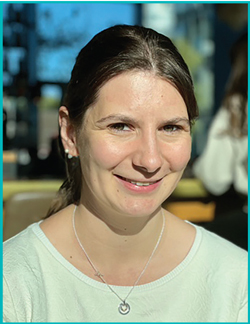
What projects are you working on?
For almost four years, I have been working on designing the cryogenic instrument CHAI for the Fred Young Submillimeter Telescope, which is currently under construction. CHAI will be the first 64-pixel heterodyne receiver for frequencies around 475 GHz and will observe the interstellar medium in the Milky Way and nearby galaxies. Currently, our team manufactures the cryostat and performs tests of the superconductive detectors and the signal processing chain so we can start the series production for all 64 pixels soon.
What accomplishments are you most proud of?
The dimensions of the cryogenic Focal Plane Unit (FPU) of CHAI are just 6.4x5.6x5.1 inch (162x142x130 mm) but contain the entire heterodyne signal processing chain for all 64 pixels. The entire FPU is cooled down to 4 K, using two powerful pulse tube refrigerators to cope with the power dissipation of the signal amplifiers. It took us more than four years of collaborative work to find a feasible design that fulfills all thermal, electrical, optical and mechanical requirements. I am especially proud of the optical array nicknamed CHARM, which divides the telescope beam evenly into 64 sub-beams and feeds them into the signal mixers. It will be one of the first parts manufactured in series production this summer. The entire manufacturing will be done by our in-house high precision mechanical workshop.
What advancements in cryogenics are you hoping to make in the future?
Our plan for the next years is, of course, to successfully manufacture, assemble, test and commission the CHAI instrument which will be one of the first light instruments on the FYST telescope, currently planned for 2025. Apart from that, our working group wants to go into research and development of a new type of cryogenic detectors called MKIDs (Microwave Kinetic Inductance Detectors). From a cryogenic perspective, these detectors are much more challenging than our current instruments because they require millikelvin temperatures instead of 4 K. My team and I are looking forward to facing these upcoming challenges.
What advancements for women would you like to see in the industry, and what is the best approach to attracting more women into the field?
I have a feeling that there is increased awareness of diversity issues in our field presently and that current unbalances will be eliminated soon. I would like to see equality between women and men, especially when it comes to salary or application processes. I am convinced that doing public outreach, especially for young graduates and students, is a practical approach. When I was attending university, there were not many opportunities to learn about the field of cryogenics and superconductivity, and, therefore, not many fellow students decided to take classes in this field.
Sukanya Sagarika Meher
Technical Staff, HYPRES Inc.
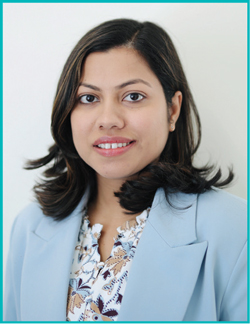
What projects are you working on now?
I was involved in an IARPA-sponsored project called SuperTools along with our collaborators Synopsys, Yokohama National University, Stony Brook University and the University of Rochester. SuperTools aims at developing complete electronic design automation (EDA) toolset to design and analyze superconductor electronic (SCE) circuits.
What accomplishments are you most proud of?
Designing a circuit with automated placement and routing is a mature field in the semiconductor industry. These tools use algorithms to determine the optimal placement of the cell library and building blocks on the chip and the most efficient routing of the connections between them. In the SuperTools project, for the first time we showcased designing superconductor circuits with greater than 10 million Josephson junctions using the Synopsys Fusion Compiler, automated placement and routing tools. A cell library forms the key component that enables the adoption of such an advanced EDA tool. We have experimentally verified the performance of this cell library by designing and successfully testing the operation of an arithmetic logic unit up to 50 GHz of clock frequency. I am grateful to be one of the functional members of the HYPRES team for the development of such a cell library and the design of superconductor digital circuits using it.
The constraints imposed by superconductor electronics are different from those imposed by semiconductor technology. We need to start thinking about multiple domains to tackle those challenges and to enable the scaling of circuit complexity. An industry-standard EDA tool suite can significantly improve the efficiency of the superconductor design process by reducing the time and cost associated with manual design.
What advancements in cryogenics are you hoping to make in the future?
Superconductor circuits have some inherent properties which provide an edge over traditional semiconductor devices such as ultraspeed and energy efficiency. I want to be part of projects where superconductor electronics are used in a range of applications such as digital signal processing, sensors and communication systems. Additionally, advancements in materials sciences and engineering could lead to the production of superconductor electronics that are easier and cheaper to manufacture, making them more widely available for the existing and emerging market.
What advancements for women would you like to see in the industry, and what is the best approach to attracting more women into the field?
In cryogenics and superconductivity, there is a need for more women to pursue careers in science and engineering, and to be represented in leadership and decision-making roles. Initiatives such as mentorship programs, networking opportunities and career development programs could help attract and retain more women in this domain. I would like to see more women highlighted for their technical and leadership accomplishments in this field through media and other platforms to raise awareness and encourage others to join the field.
I believe one of the best approaches is encouraging girls and young women to pursue STEM education early on through mentorship programs, internships and scholarships. These programs can expose them to superconductivity and other scientific fields and provide them with opportunities to work with experts in the field. Another way is by creating a network of women in superconductivity who can support and advise each other. Women role models in this field can also inspire and encourage younger women to pursue careers in cryogenics and superconductivity. Further, organizing conferences, events and workshops that focus on superconductivity and feature competent women speakers without gender bias to create a more inclusive environment for women to share their research and work experience can lead to awareness and curiosity.
Cassie Kirkconnell Smith
Micro-Electronics Engineer, West Coast Solutions (WCS)
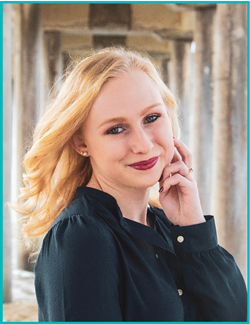
What projects are you working on now?
Since joining WCS, my primary focus has been on the design and development of advanced packaging schemes for cryocooler electronics. Cryocooler control electronics (CCE) is an area that is usually overlooked; however, these electronics are essential to ensure the cryocooler runs as efficiently as possible for its mission. In my engineering role, I have designed printed circuit boards (PCBs) and tested the electronics upon arrival at WCS. My testing of this hardware has mostly been related to vibration control tuning and performance verification. The objective of the testing is to get the cryocooler to operate as quietly as possible with as little vibration as possible, which is assessed by mounting the cryocooler on a Minus-K table and measuring accelerometers mounted along the axis of the compressor of the cryocooler.
What accomplishments are you most proud of?
We recently celebrated the production of the first release of a WCS flight firmware that has active vibration control. However, I am most proud of our Compact Cryocooler Electronics (C3E) design effort, which was also the first project I took on as a full-time engineer with WCS. Essentially, we took the function, power and capabilities of a two-board system (auxiliary power conditioning board and main control board) and created a compact version on a 3” X 2” board. In order to successfully miniaturize this product, advanced design work went into the creation of the printed circuit board application (PCBA). With the collaboration of our team, we were able to develop a 12-layer PCBA that packages all the required functionality onto a 3” x 2” board with more than 200 components located on the tiny PCBA.
What advancements in cryogenics are you hoping to make in the future?
WCS is always looking to advance technology in new and different ways. One of the projects I am working on now is developing a high power (>1 kW), multi-board brassboard design of Cryocooler Control Electronics (CCE) for a 90 K, 150 W turbo-Brayton cryocooler. Along with continuing my technical work as a micro-electronics engineer, I have also recently taken on the role of project engineer for our first flight electronics program. My primary role on the flight program is to manage the day-to-day tasks of the team, tracking schedules and ensuring that we are ready to move into each consecutive phase of the program as we are moving along. Due to my experience in the design and testing of these electronics, I am able to better understand the project as a whole and assist in leading the team to a successful delivery in May 2023.
As I advance my career, I hope to push the boundaries of the capabilities of cryocooler electronics. Miniaturizing technology is a consistent challenge that all electronics face, and I want to be on the front lines of being able to make small, efficient and groundbreaking CCEs. I look forward to seeing how far WCS can go to change the game of cryocooler electronics, specifically for space applications. The challenge of developing electronics and hardware for space is something that deeply fascinates me. Cryocooler electronics, combined with the challenges of space flight, drives me to continue to think outside the box as an engineer.
What advancements for women would you like to see in the industry, and what is the best approach to attracting more women into the field?
I am a firm believer that in order to be the “best” in a field, you have to have a well-rounded team of individuals who can all share and respect different points of view, which includes women. To continue making the advancements we want to see in the future for cryogenics and superconductivity, women need to be well represented and need to continue to create substantial careers in cryogenics. Sarah Mitchell was the ICC conference chair in 2022. Seeing a woman in a leadership role in cryogenics is not the norm. There are 18 people on the International Cryocooler board, and only two are women. I hope to see more women move into leadership roles in the cryogenics field and encourage other women to continue to share their ideas toward advancement in our field.
I think the best thing we can do, as a society, is to continue to encourage women to follow their passions and look for open doors in different areas of interest. Cryogenics is a powerful and unique area of engineering that is not well advertised to the general public, especially in schools. I believe if we want to see more women enter into the world of cryogenics and superconductivity, it is important for us to spread awareness of our community and shine light on the amazing work we do as cryogenics engineers.
Dr. Wenjuan Song
Lecturer/Assistant Professor in Electrically Powered Aircraft and Operations, James Watt School of Engineering, University of Glasgow, UK
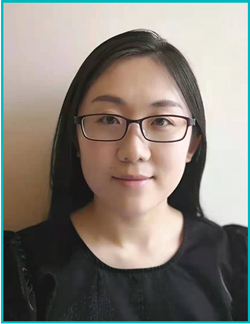
What projects are you working on now?
I am leading my team to accelerate the net-zero aviation through electrification of aircraft, particularly on the fault management using superconducting technology. I am also working with my team to promote highly efficient and reliable renewable energy systems using high temperature superconducting applications.
What accomplishment(s) are you most proud of?
There are many accomplishments that I am proud of. The first includes acting as lead guest editor of a special focus issue on Superconductivity for Cryo-Electrification of Aviation and Other Transportation Applications, in Superconductor Science and Technology (SuST), together with guest editors Mohammad Yazdani-Asrami, University of Glasgow, UK (recently featured as a young professional in Cold Facts Vol. 39 No. 1, February 2023); Zigang Deng, Southwest Jiaotong University, China; Sastry Pamidi Florida State University; and Ludovic Ybanez, Airbus UpNext, France. A second accomplishment occurred in 2022 when I was interviewed and featured as a young professional by the European Cooperation in Science and Technology (COST) Action 19108, High-Temperature SuperConductivity for AcceLerating the Energy Transition. Other accomplishments include being endorsed as “Global Talent” by Royal Academy of Engineering, United Kingdom in 2021; being featured in the “Talented Women, Early Career Researcher for International Women’s Day” as a representative for the Department of Electronic & Electrical Engineering, The University of Bath in 2021; and being awarded with “Excellent Ph.D. Thesis Award” at Beijing Jiaotong University, China in 2019.
What advancements in cryogenics are you hoping to make in the future?
The research activities in my group aim to advance the super-conducting technology by incorporating artificially intelligence (AI) approaches into superconducting applications while increasing the power density of superconducting applications, particularly superconducting propulsion machines, cables, fault current limiters and transformers.
What advancements for women would you like to see in the industry, and what is the best approach to attracting more women into the field?
I would like to see more dedicated female cryogenic engineers or researchers to advance the technology maturity in the fields of cryogenics and superconductivity, in particular how hydrogen and liquid hydrogen could benefit the superconductivity technology and powertrain systems in electrification of aircraft in the aviation sector.
It is very important to consider equity, inclusion and diversity when one is recruiting the researchers and engineers both in academia and industry. In addition, dedicated scholarships in place to recruit and support female postgraduate and Ph.D. students will help on this in academia. Well-trained and skilled Ph.D. students could later help on both academia and industry in the field of cryogenics and superconductivity.
Eve M. Vavagiakis
National Science Foundation Astronomy and Astrophysics Postdoctoral Fellow, Cornell University
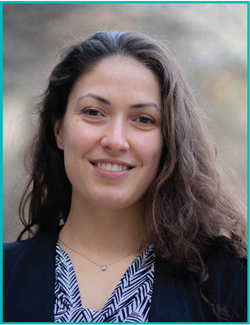
What projects are you working on now?
I am developing cryogenic cameras for the CCAT-prime Project’s Fred Young Submillimeter Telescope in the Atacama Desert, Chile. These cameras deploy optics and superconducting detector arrays, cooled by dilution refrigerators and pulse tube cryocoolers. They are designed to image the sky at millimeter and submillimeter wavelengths for precision measurements of the oldest light in the universe, the cosmic microwave background. When fully populated, the 1.8-meter diameter Prime-Cam receiver will field more than 100,000 polarization-sensitive kinetic inductance detectors (KIDs), the largest deployment of these detectors yet. Fielding large numbers of superconducting detectors like KIDs at 100 mK allows us to improve the sensitivity of our measurements, enabling precise constraints on cosmology, fundamental physics and astrophysics.
What accomplishments are you most proud of?
During my Ph.D., I designed the cryogenic receiver I am now developing for deployment. Over the past few years, I have been able to watch this camera turn from a CAD model into reality. Taking a large project from conception to testing was thrilling. It’s an additional joy to be able to work with a team of students to teach a new generation of scientists the basics of cryogenics. One challenge was navigating lab work during the pandemic. For example, I had to single-handedly construct a large, heavy support frame when multiple people were not allowed in the lab at the same time. Another was working with a new team of students when I became a postdoc. I had to learn how to prepare a novel instrument for testing with several students who had not worked with cryostats before. We became a great team, and I’m excited to get this instrument into the field.
What advancements in cryogenics are you hoping to make in the future?
I am excited to continue pursuing the design and development of new cryogenic instruments for cosmology and astrophysics. I plan to test and deploy superconducting detectors in novel cameras for measurements of the cosmic microwave background and submillimeter sky. This work is needed to improve our understanding of the history, evolution and composition of our universe, and my career goal is to take a lead role in that pursuit.
What advancements for women would you like to see in the industry, and what is the best approach to attracting more women into the field?
I would like to see an improved public understanding of opportunities in cryogenics and superconductivity and how we need to pull talent from all parts of society to advance the fields. As subsets of physics and engineering, cryogenics and superconductivity are not well understood by the public. Neither is the importance of women’s skills in these fields. Increased public awareness of these exciting opportunities, and how women are needed to progress our capabilities, would help get more talented minds on board.
Early education for children and early familial support of their goals would help level the playing field for women in physics, astronomy and engineering. There is still significant societal pressure on girls away from hands-on instrumentation roles, as well as a fundamental lack of understanding of modern research among the general public. I am writing children’s books on science topics and developing educational programs for K-12 students in an attempt to address these gaps.
Izzy Yeomans
Cryogenics Technical Intern, Commonwealth Fusion Systems
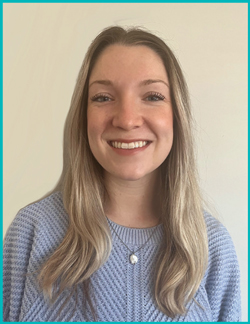
What projects are you working on now?
I am currently part of the cryo-distribution system team that delivers cryogenic helium gas from our cryoplant to the tokamak fusion device. Specifically, I am designing a “turnaround tool” device for the cryo distribution system commissioning. The “turnaround tool” connects the cryogenic helium supply to the helium return for each temperature circuit. This device will also be able to mimic the pressure drops and heat loads of the tokamak device. I am working with vendors to design and develop a solution for this device that considers project complexity, cost and schedule.
What accomplishments are you most proud of?
I have not worked at CFS for too long, but I am extremely proud of my progress thus far on the design of my turnaround tool. I am gaining experience in various areas of engineering, including technical design work, communicating with vendors, procurement and cost analysis.
What advancements in cryogenics are you hoping to make in the future?
Of course, the primary advancement in cryogenics that I am hoping to make is to contribute to the ability of CFS’s SPARC design to produce net energy with its groundbreaking technology. The cryogenics system that my team is designing will be a catalyst for this advancement. Many technologies that operate at extremely high temperatures, like those of CFS, require cryogenic systems, so I am hopeful that the industry grows exponentially from where it is now.
What advancements for women would you like to see in the industry, and what is the best approach to attracting more women into the field?
As this is a traditionally male-dominated field, I would like to see more women in cryogenics that are part of exciting projects and companies. Once they involve themselves and are inevitably able to excel, they can take the lead to encourage more females to enter cryogenics or superconductivity fields. I would also love to see them holding leadership positions to provide a path for younger generations to follow suit.
I think the best approach to getting more women into the field of cryogenics is for women who currently work in the field to pave the way. Having women in leadership roles at a company encourages other women to believe that they, too, can reach these levels. It would be great to see more women leaders in the engineering field appearing at college campuses and job fairs so that female students can picture themselves in those roles. I am encouraged by the increase in the percentage of women in engineering roles, even since I started college, but we have a long way to go. Let’s keep the progress going, and I hope to see more women in cryogenics in the future!
Zhuo Zhang
Ph.D. Researcher, Applied Thermal Science Lab, University of Twente
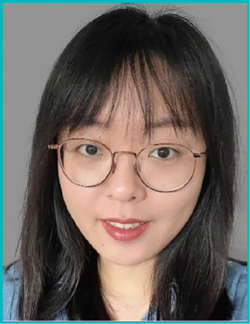
What projects are you working on now?
The project I am currently working on is “Direct Freeze Concentration Using Liquid Nitrogen.” In the existing progressive freeze concentration systems, a freezer based on a vapor compression cycle is used. In the present study, a direct progressive freeze concentration method is proposed where the freezer is replaced by cryogenic liquid nitrogen.
What accomplishments are you most proud of?
The thermodynamic model that I developed incorporates the simultaneous heat and concentration diffusion during freezing of a liquid solution. I validated this model with lab experiments. The reactor that we developed has a unique feature: we could extract microsamples of the solution to measure the concentration of the solute in the solution. This allowed us to track the concentration with time. Compared to what is reported in the literature, we have developed a robust phenomenological model of the freeze concentration process. The second major challenge I am investigating is understanding the evaporation of a liquid nitrogen droplet in the vicinity of liquid water. I developed a phenomenological model that includes capillarity physics, thermal diffusion and momentum transport. This model is far more accurate than the crude models proposed in the literature and fits well to the experimental data reported in the literature. This work will soon be published in a journal.
What advancements in cryogenics are you hoping to make in the future?
My goal is to continually develop and become a professional in the cryogenics field. I am motivated to investigate cutting-edge technology in the cryogenics field and tackle problems that can make a valuable contribution to the sustainable development of society.
What advancements for women would you like to see in the industry, and what is the best approach to attracting more women into the field?
The cryogenics and superconductivity fields require highly advanced and specialized knowledge. Women have been underrepresented in this area. Increasing in diversity and inclusivity can certainly encourage women to participate and be involved in this field. I hope to see more women involved in science and engineering, using their interdisciplinary skills to advance the cryogenics and superconductivity areas to meet the increasing demands for cleaner energy and sustainable processes.
It is important to change the perspective of the cryogenics field. The first impression one gets is large storage vessels, pipes and valves with which most women do not immediately associate. However, this is not true. Cryogenics is an interdisciplinary branch where knowledge of thermal sciences and mechanical engineering merge. Processes at lab scale that require low temperatures are increasing, similar to my Ph.D. work. Women choosing chemical engineering, mechanical engineering or physics as their major should find it comfortable to work in this field.


